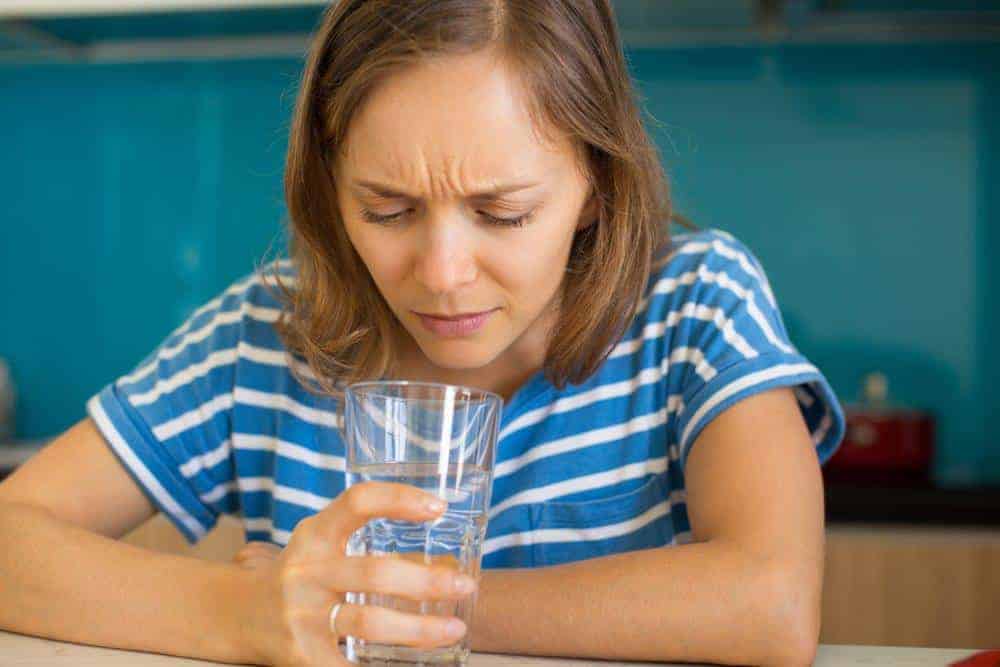We often take our drinking water for granted. That is, until it begins to taste or smell odd, or there is a boil order, or we hear stories about contaminated water coming out of the tap due to old pipes or pollution. The truth of the matter is that tap water is by and large safe to drink, barring events that could cause contamination. However, it’s not necessarily the case that tap water is always pleasant to drink. There are a few ways to better understand what gets in to your water, how you can get better informed about the quality of your water, and how you use filtration systems to keep your tap water clean.
What is “Safe to Drink” Tap Water?
There are a few federal standards in place to determine water quality for home consumption. These standards typically involve allowing a limit to the number of chemicals, minerals, and organic materials (like bacteria) are in the water.
- Chemicals that show up in tap water are typically, but not always, linked to water treatment. These chemicals are actually used to kill bacteria before it reaches your home, but don’t always dissolve once introduced into the water supply. Chemicals like liquefied Chlorine, Calcium Hydroxide, and Fluoride are pretty common in tap water. Other chemicals, like Arsenic Salts, can also show up.
- Minerals show up in tap water, usually naturally, as it makes its way from the source to your tap. Healthy minerals like Magnesium, Calcium, and Potassium are usually in water and, in the amounts present in water, are actually good for you. However old pipes can age and leach harmful minerals, like Lead, into the water supply.
- Bacteria show up when pipes burst, or some other contamination occurs. This is typically when boil orders happen-the boiling will kill bacteria present in the water. Chemicals used to treat water will typically kill these bacteria, but not always, especially when there are accidents.
Not all of these things are necessarily bad on their own. Studies have shown that water that retains minerals like Calcium and Magnesium is actually healthier for us than water where all minerals are removed. Likewise, chemicals used to treat water for bacteria aren’t generally harmful if limited to small amounts, and they keep us from getting sick when we drink from the tap. So “clean” tap water is water that probably contains trace minerals and elements, and perhaps some slight traces of chemical treatment, without bacteria, mold, or other organic compounds included.
The Problem of Water Quality at the Tap
The main issue is that we, as consumers and homeowners, can’t control the quality of our tap water until it actually gets to our house. That leaves a lot of leeway for accidents to happen that impact your water quality. Regulations and standards for maintaining clean water fall at the federal and municipal level. In 1974, the Safe Drinking Water Act authorized the Environmental Protection Agency to set standards for clean water coming from lakes, rivers, reservoirs, and other sources. This disallows anyone to dump pollutants into drinking water. However, it is up to local municipalities to enact the standards, to maintain water systems, and to enact repairs for those systems when necessary. As we may know from personal experience (and from recent news stories from towns like Flint, MI), this doesn’t always happen. So it is important to understand a bit about what you can do to better know, and improve, the quality of your tap water.
Test and Filter Water Right at the Tap
Testing water at the tap is relatively simple. Several manufacturers make reliable testers that will check for minerals, chemicals, and organic compounds in your water. If you decide to grab a filter or order one online, make sure you find one that tests for (but not limited to) bacteria, lead, nitrates/nitrites, chlorine, and tests the pH of the water. Depending on your trust of a testing kit, you can pick up ones that offer results right in your home, or kits that allow you to send samples to labs for testing and reporting. Plumbers local to your area may also have more sophisticated testing methods that can give you accurate results the same day. Filtering is a most obvious answer, and you may want to have a filter in place regardless of your test results. The most obvious, and perhaps easiest method of getting high-quality tap water is to use filtration at the tap.
This can be in a couple of configurations:

- Separate Filtration, like a pitcher with a water filter built-in. Simple. Cheap. Works in the short term, and for water that isn’t necessarily contaminated.
- A filter that attaches to the tap and filters water as it comes out. This is a little more reliable than a separate water filter, and a lot more convenient.
- A filter system underneath your sink, attached to your water supply as it comes in through the wall. These filter systems are typically more involved than the pitcher or faucet-attached versions and feed off the incoming cold water to provide a secondary, filtered water source.
- A filter system attached to the cold-water supply for the house (a “whole house” filter). These are usually the most “heavy-duty” filters and might specialize in removing specific chemicals or bacteria.
When filtering your water, make sure to get a system that doesn’t remove all minerals (like some reverse-osmosis filters). This can actually lower the quality of your tap water by stripping out things that are good for you. Solid filters will often retain or reintroduce helpful minerals while removing harmful by-products of treatment and pollution.
Get Information from the Source
Another, more comprehensive way to get a bead on your water quality is to get a Consumer Confidence Report for your local water service. This report is generated for customers of water providers (typically cities and townships) but they aren’t always easy to get.
These reports, required by the EPA, are part of your water provider’s responsibility to you and your fellow consumers. If you are a home or building owner where you pay for water directly, you are legally obligated access to a CCR that outlines the quality of your water. The CCR includes, at minimum, information on the chemical makeup of your water and its source.
This information is always useful, for peace of mind if no other reason. But if you want to install something like a full-home filtration system, a CCR report can help you buy the right kind (as some filters will target specific chemicals and not others).
If you are not a homeowner (like a renter in an apartment) then you should go through your landlord to see if you can see this report, or if they know how to access it.
Keep Your Tap Water Quality High
Barring accidents or mismanagement of supply, tap water is generally safe to drink. That doesn’t mean you don’t have to do your research on what is in that water, and how you can mitigate the impact of chemicals and bacteria with proper filtration. If you want to keep your tap water quality high, then buying the right filter for the right compounds is paramount.
But most importantly, don’t forget that tap water contains several minerals that make it healthy. Having Calcium and Sodium in your water is not a sign of contamination. So, find a way to balance between great tasting water that is clean and fresh out of the tap, with a filtration system that will protect you from boil orders, damaged pipes, or bacteria.

